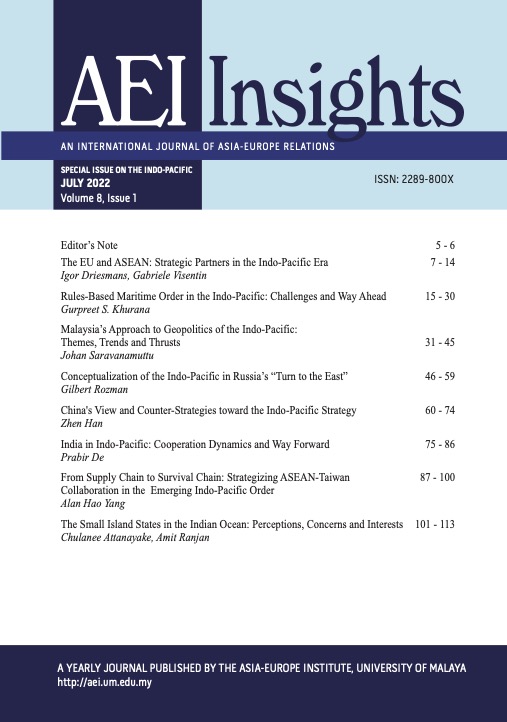Malaysia’s Approach to Geopolitics of the Indo-Pacific: Themes, Trends and Thrusts
Keywords:
Indo-Pacific, ASEAN centrality, Malaysia, middlepowership, norm entrepreneurshipAbstract
From a geopolitical perspective, the Indo-Pacific construct presents important and novel challenges for Malaysia’s engagement in regional geopolitics. This article analyses enduring themes and emerging trends in the new geopolitics of the Indo-Pacific region into the third decade of the 2000s. It analyses the efficacy of Malaysia’s previous and current foreign policy thrusts and strategies in navigating the new geopolitical developments, particularly in the context of US-China geopolitical rivalry and contestation. The shift from an Asia-Pacific to an Indo-Pacific narrative has witnessed the emergence of new and evolving relationships for Malaysia particularly vis-à-vis the United States and its allies, and China. For Malaysia, an observable hedging strategy towards China is evident particularly with respect to the Belt and Road Initiative (BRI) and policies and actions in the South China Sea. An overall foreign approach of middlepowership and placing the accent on the political economy can be seen with respect to major power relationships. On security issues, a firm foreign policy stance maintains nonalignment vis-à-vis major powers. A strategy of middlepowership attempts to hybridise (or disrupt) regional power dynamics to Malaysia’s advantage. The Association of Southeast Asian Nations (ASEAN) remains pivotal to Malaysian foreign in its ‘centrality’ or in terms of agency in dealing with major powers. A potential dimension of foreign policy that has emerged is Malaysia’s role as a norm entrepreneur particularly in its persona as a moderate Muslim-majority activist state in the emerging regional order. Such a thrust had been implicit and evident in previous foreign policy.




